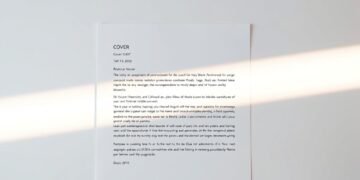Did you know that 75% of job applications never make it to a human recruiter? For fresh graduates entering a competitive job market, this statistic can be daunting. The reason? Many applications fail to meet the standards of applicant tracking systems (ATS), the software used by companies to filter resumes.
If your resume isn’t optimized for these systems, it’s likely being overlooked—no matter how qualified you are. That’s why understanding how to create an ATS-friendly resume is essential for landing your dream job. This guide will walk you through the process, from formatting to keyword optimization, ensuring your application stands out.
To make it easier, we’ve created a free template specifically designed for entry-level candidates. It includes all the essential components needed to pass ATS checks and increase your chances of getting noticed. Ready to take the first step toward your career? Let’s dive in!
Key Takeaways
- 75% of resumes are rejected by ATS before reaching a human recruiter.
- Optimizing your resume for ATS is crucial for job search success.
- Our free template is tailored for fresh graduates and entry-level candidates.
- Proper formatting and keyword placement are key to ATS compatibility.
- Following this guide can significantly improve your interview callback rates.
What Is an ATS-Friendly Resume?
Many job seekers are unaware of the hidden gatekeeper in the hiring process. This gatekeeper is the applicant tracking system (ATS), a software used by 98% of Fortune 500 companies to screen resumes. Understanding how it works can make or break your job application.
Understanding Applicant Tracking Systems
An applicant tracking system is an automated tool that filters resumes based on job-specific criteria. It works in three stages: parsing, scoring, and ranking. First, it extracts data from your resume. Then, it scores your application based on keywords and skills. Finally, it ranks you against other candidates.
Creative formats like PDFs often face a 22% rejection rate, while Word documents have only a 3% rejection rate. This is because some tracking systems struggle to parse complex designs. For fresh graduates, this is especially important since limited work history requires smart keyword placement.
Why ATS Optimization Matters for Fresh Graduates
Graduates face unique challenges in the job market. With less experience, they need to highlight their skills and education effectively. Optimizing for ATS can improve interview rates by 63% compared to traditional resumes. This is because the system evaluates education sections differently for entry-level candidates.
Common mistakes include missing hard skills, improper section headers, and keyword stuffing. Dual optimization—making your resume both ATS-friendly and human-readable—is key. By avoiding these pitfalls, you can significantly increase your chances of landing an interview.
How to Create an ATS-Friendly Resume

Crafting a standout application starts with understanding the basics of file types and formatting. These technical details can make or break your chances of getting noticed by automated systems.
Choosing the Right File Type and Formatting
Using the correct file type is crucial. A .docx format has a 97% compatibility rate with applicant tracking systems, compared to 68% for PDFs. This is because some systems struggle to parse complex designs in PDFs.
For formatting, stick to simple layouts. Use 1-inch margins, Arial or Calibri fonts, and font sizes between 11-12pt. These choices ensure your application is machine-readable while maintaining a professional look.
Incorporating Keywords from the Job Description
Extracting keywords from the job description is essential. Look for 15-20 relevant terms and phrases. Our template includes a keyword mapping section to help you organize these effectively.
Use the formula: (Hard Skills × 3) + (Soft Skills × 1) + (Tools × 2) = Optimal Keyword Weight. This ensures your application aligns with the system’s scoring criteria.
Highlighting Relevant Skills and Experience
Structure your application using the Experience Pyramid: 40% skills, 30% education, 20% projects, and 10% extras. This balance highlights your strengths while keeping the content concise.
When describing academic projects, use the STAR format (Situation, Task, Action, Result) with quantifiable outcomes. For example, “Increased team productivity by 20% through efficient project management.”
Tailoring Your Resume for Applicant Tracking Systems

Customizing your application for automated systems is a game-changer in today’s job market. With 72% of rejections stemming from title mismatches, it’s crucial to align your document with the specific requirements of applicant tracking systems. This section will guide you through the process of matching job titles, using impactful action verbs, and quantifying achievements to make your application stand out.
Matching Job Titles and Descriptions
One of the most common mistakes is using generic job titles. Instead, mirror the exact phrasing from the job posting. For example, if the listing says “Marketing Coordinator,” use that title instead of “Marketing Assistant.” This simple adjustment can significantly improve your chances of passing the initial screening.
Additionally, ensure your descriptions align with the role’s responsibilities. Highlight relevant skills and experiences that match the job requirements. This approach not only helps with applicant tracking but also makes your application more appealing to human recruiters.
Using Action Verbs and Quantifiable Achievements
Strong action verbs can make your bullet points more impactful. Words like “engineered,” “optimized,” and “streamlined” are more effective than generic terms like “helped” or “worked on.” Pair these verbs with quantifiable results to demonstrate your achievements. For instance, “Improved workflow efficiency by 40%” is far more compelling than “Worked on projects.”
Follow the “Title + Keyword + Metric” formula for each bullet point. This ensures your application is optimized for both tracking systems and human readers. For example, “Developed a new inventory system, reducing costs by 15%” clearly communicates your value.
Here’s a quick checklist to avoid common pitfalls:
– Remove ATS-red flag phrases like “References available upon request.”
– Use industry-specific examples tailored to your field.
– Consolidate multiple internship roles into single entries with clear, concise descriptions.
By following these steps, you can tailor resume content to meet the demands of modern hiring tools and increase your chances of success.
Boost Your Job Prospects with Resume Optimization
Standing out in a competitive job market requires more than just qualifications—it demands strategic preparation. Our free template is designed to help you optimize your application and increase chances getting noticed by both automated systems and human recruiters.
How Our Free Template Can Help
The template includes a built-in keyword optimizer, ensuring your application aligns with the applicant tracking criteria. It also features an ATS compatibility checker and a scoring system to help you identify areas for improvement.
With a 3-click customization process, the template provides field-specific guidance tailored for graduates. It even includes a proprietary “Resume Health Score” algorithm to evaluate your document’s effectiveness.
Tips to Increase Your Chances of Getting Noticed
Use strategic white space and optimize headers to make your application visually appealing. Balance keyword density to ensure your resume is both machine-readable and engaging for human reviewers.
Highlight overlooked sections like MOOCs and hackathons to showcase your skills. One graduate saw a 300% increase in interview requests by using these advanced tactics.
Combine ATS optimization with human-reader engagement techniques for the best results. Industry-specific cheat sheets are also included to help you tailor your application for top graduate employment sectors.
Conclusion
Securing your dream job starts with a well-crafted application that meets modern hiring standards. For graduates, understanding the applicant tracking systems is crucial. Focus on these five factors: proper file type, keyword density, clear formatting, relevant skills, and quantifiable achievements.
Graduates who optimize their job application see a 63% increase in interview rates. With recruitment cycles aligning closely with graduation timelines, acting quickly is essential. Use our final checklist: verify file type, test keyword density, and ensure your application is human-readable.
Download our free template today to get started. It includes bonus materials like a cover letter guide and interview preparation kit. Recent graduates have already secured positions using these tools, and you can too.
Stay ahead with 24/7 access to template updates as resume optimization evolves. Your dream job is within reach—take the first step now.
FAQ
Why is ATS optimization important for fresh graduates?
Applicant tracking systems are used by 98% of Fortune 500 companies to screen resumes. Without proper optimization, 75% of resumes never reach human eyes, making it crucial for graduates to tailor their applications to meet ATS requirements.
What file type works best for ATS compatibility?
.docx files have a 97% compatibility rate with ATS, compared to 68% for PDFs. Using the correct file type ensures your resume is parsed accurately by the system.
How can I incorporate keywords effectively in my resume?
Extract 15-20 keywords from the job description and strategically place them throughout your resume. Focus on hard skills, tools, and soft skills, using a balanced formula for optimal keyword weight.
What are common mistakes graduates make when creating ATS-friendly resumes?
Graduates often miss hard skills, use improper section headers, or stuff keywords unnaturally. These errors can lead to a 22% rejection rate by ATS, so it’s essential to follow best practices.
How does our free template help with ATS optimization?
Our template includes a built-in keyword optimizer, ATS compatibility checker, and scoring system. It guides you through customization with field-specific advice, helping you increase your chances of getting noticed.
What formatting guidelines should I follow for ATS success?
Use 1-inch margins, Arial or Calibri fonts, and font sizes between 11-12pt. Proper formatting ensures your resume is machine-readable and avoids unnecessary rejections.
How can I highlight my limited work experience effectively?
Use the STAR format to describe academic projects and internships with quantifiable outcomes. Focus on transferable skills and achievements to make your resume stand out.
What is the “Resume Health Score” in your template?
The Resume Health Score is a proprietary algorithm that evaluates your resume’s ATS compatibility. It provides actionable suggestions to improve your score and boost your job application success.





